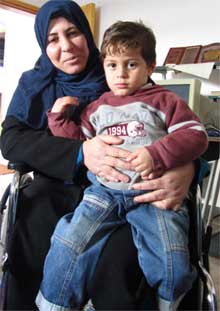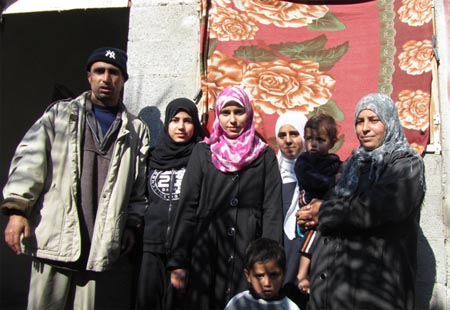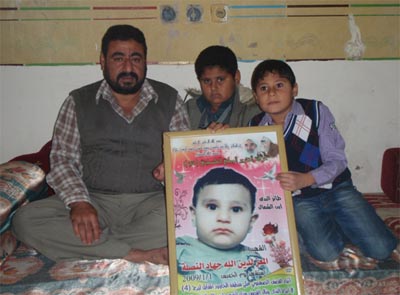Tag: Beit Lahiya
-
10 January 2009: Wafa al-Radea
10 January 2012 | Palestinian Centre for Human Rights “When I left my children I was walking and my children had not seen my wounds. The most difficult moment was when I came back with only 1 leg and many injuries. I was a different Wafa. When I came back I was supposed to happy…
-
8 January 2009: The Al-Rahel family
8 January 2012 | Palestinian Centre for Human Rights “The other children keep talking about Dima and the memories of both incidents. ‘We wish to die like Dima’ is what the children sometimes say to me because of all the stress and our poor living conditions.” On 8 January 2009, at approximately 11:00, four missiles…
-
1 January 2009: The Nasla family
1 January 12 | Palestinian Center for Human Rights “I wish that if our fate is to die, that we die together, I wouldn’t want anybody left to have to bear this sort of pain” On 1 January 2009 at around 15:00, Israeli military planes targeted a water tower across from the home of the Nasla…



